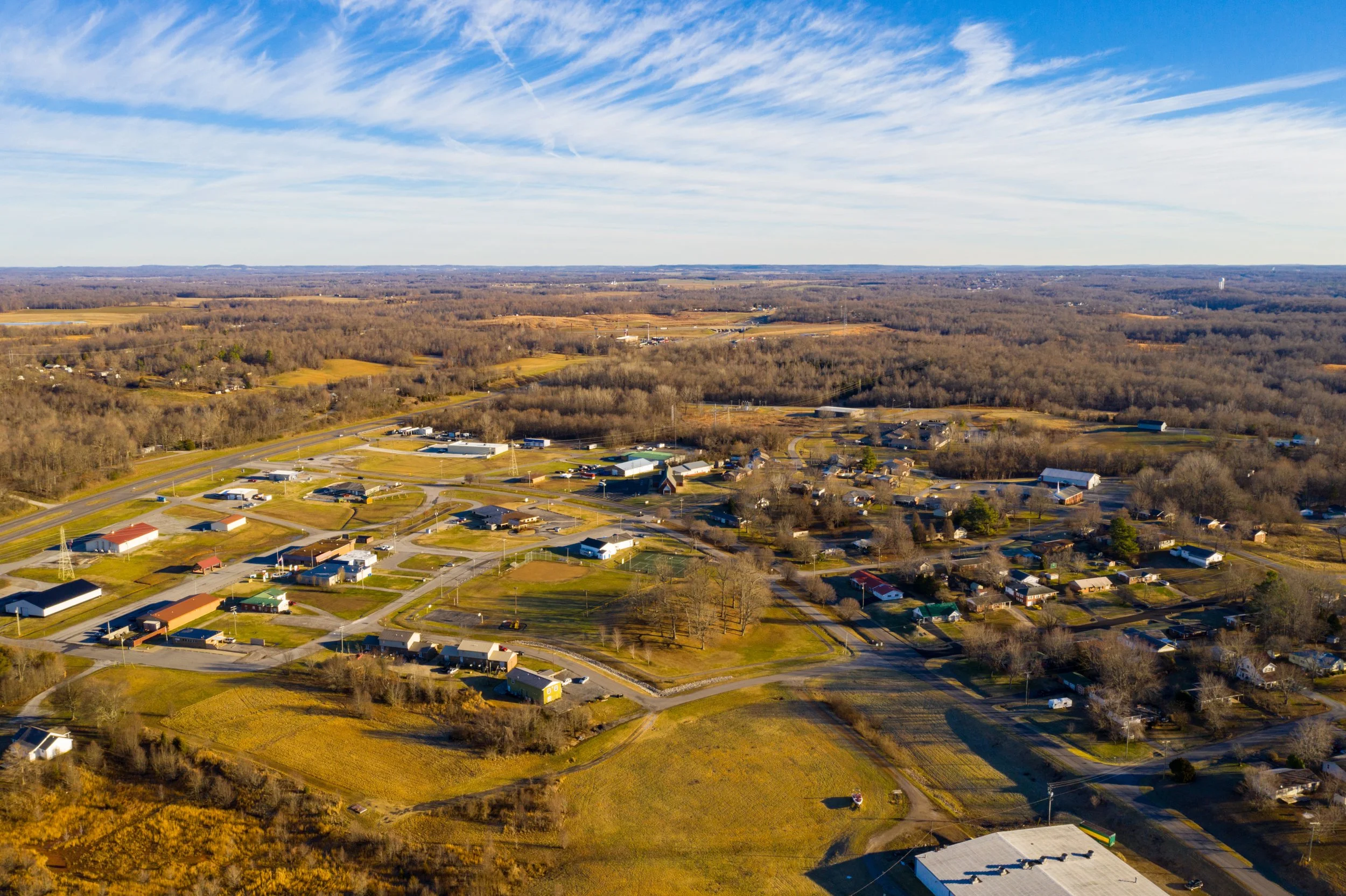Rural Revival
BRIDGES Rural College Transformation Insights
Role*
Graphic design, publication design, art direction
*completed in partnership with Education Design Lab as Associate Designer for Visual Design + Impact
Tools
Adobe InDesign, Google Slides, Canva, stock photography
Timeline
July 2023–November 2023
Background
Sponsored by Ascendium Education Group, the BRIDGES Rural program (Building Rural Innovation, Designing Education Strategies) involves five rural colleges dedicated to a three-year project aimed at enhancing their capacity and expanding outreach in rural areas.
Action shot from Day 2 of the Construction Combine, hosted by Central Eastern Idaho, as part of their BRIDGES Rural pilot. Students worked alongside experienced contractors to learn framing, drywall, concrete, and more skills, and on the second day, they built sheds that were donated to community causes. (Photo credit: Nishita Chheda, Education Designer, Education Design Lab)
Designing Rural Revival
“Rural Revival” captures the design and innovative pathways piloted by the participating institutions, and the resulting community partnerships and learner-focused support services answering the question, How might we strengthen the capacity of rural community colleges to serve as critical economic growth engines for their learners and communities?
My design approach to publications with the Education Design Lab team is thorough, collaborative, and adaptive, with a focus on meeting the needs of both the content experts and our target audience.
-
In every publication design at the Lab that I’ve done far, I know the co-authors of the content are very close to the work itself. They are the knowledge experts, so I ensure they’re involved in my design process to align my design with their vision of how they want their research to be presented.
-
The co-authors provide their content in a Google Doc, allowing all contributors across our remote organization to suggest changes. By the time 80% of the content was solidified, the team had already divided it into sections, allowing me to start storyboarding the publication in Adobe InDesign.
I leverage our organization’s brand style guide and our previous publications to aid in my design decisions for use of color, accessible color combinations, typography, and overall style. Regarding size and orientation, I decided to stick to 11x8.5” in case our audience would like to print these pages for themselves. The landscape orientation would also allow the project team to convert these pages into Google Slides for future conference presentations, with minimal editing.
From there, I allot myself space towards the beginning and end of the publication for front and back matter respectively, then plot the major sections in first. The number of pages between sections is determined by how much copy it has and how much weight the team wants the visuals to have, like a big headline, a callout quote, an image, or a graphic. From there, I get granular, dividing each page to troubleshoot placement of said content.
-
I recognize not everyone at our organization has an Adobe Creative Suite license, nor are familiar with Adobe design software, so I export each draft as a PDF and upload it to Google Drive so that the team can view it and comment any changes they would like me to make. Whenever a copy change was made in the original Google Doc, I would also reflect this change in the InDesign file.
-
Leading up to the public release, this publication was redesigned 10 times over the course of 5 months. Drafts 1–7 was largely implementing copy changes, and troubleshooting agreement of content placement, overall flow, and any visual aids I created. Draft 8 was a final review for copyedits by my Communications Director. After implementing those changes, Draft 9 was sent to the funder for approval, with the 10th iteration as the version launched to the public.
Created in Adobe InDesign, with assets created in Canva. Photography featured was provided by the co-authors, or pulled from Adobe Stock.
The Social Media Campaign
Due to unforeseen circumstances, public release of “Rural Revival” was delayed a few times after production of the publication was complete, but when we were ready to launch, the BRIDGES rural team at Education Design Lab had just been awarded a grant renewal by the Ascendium Education Group.
To recruit applications to BRIDGES Rural 2.0, my Communications Director proposed a blog series and social media campaign, spotlighting each of the 5 colleges in BRIDGES Rural 1.0.
Graphics created in Canva.
Graphic created in Canva.
If you liked this project, check out
Designers in Residence
Social media campaigns, publication design, and marketing materials for a 18-month project.
Transforming Community Colleges
Infographic generation, publication design, and social media graphics for insights 10 years in the making.
Discovery Guide (coming soon)
Using human-centered design to understand how to enhance the museum experience of caregivers.



